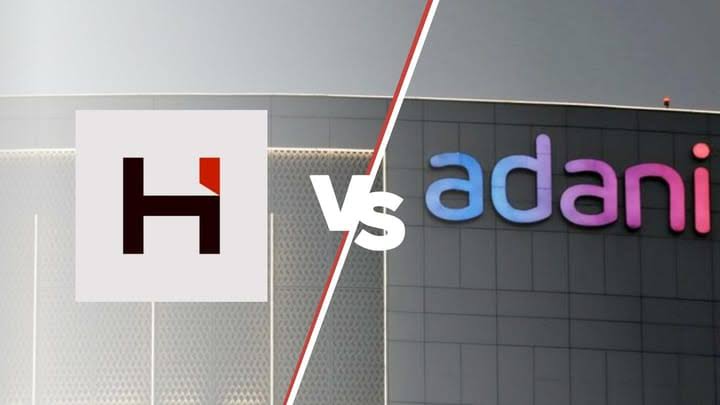Despite the Adani crisis, the RBI claims that the banking industry is resilient and stable.

The Reserve Bank of India, RBI has allayed fears about the Indian banking system’s power to uphold the shock caused by the loan exposure to the Adani Group, which is experiencing a stock market meltdown. The RBI stated that the banking system stayed resilient and stable, without identifying the conglomerate.
The Adani Group has had a difficult week with the publishing of a study by a short-seller accusing it to be the greatest swindle in corporate history, involving fraudulent transactions and share price manipulation. Because of the continuous severe decrease in share prices, the Group was obliged to cancel a Rs 20,000-crore share sale a day after the offer was approved.

There have been media stories expressing worry over Indian banks’ exposure to a corporate conglomerate According to the central bank, being the regulator and supervisor, the RBI keeps a close eye on the banking industry and respective banks to safeguard financial stability. The banking industry, according to the RBI’s present assessment, is robust and stable. Various capital adequacy, asset quality, liquidity, provision coverage, and profitability indicators are all in good shape, according to the RBI. The RBI’s Large Exposure Framework (LEF) regulations are being followed by banks as well.
According to a recent CLSA research, Indian banks have loan exposure to the Adani Group of approximately 80,000 crores, accounting for around 40% of the conglomerate’s total debt of almost 2 lakh crore.
State-run banks, led by the State Bank of India, have loaned almost three-fourths of the Indian banking system’s exposure to the company, accounting for 30% of overall exposure. Indian private sector lenders account for one-fourth of the total, accounting for 10% of the total. Foreign banks have helped business finance significant purchases.
State Bank of India (SBI) chairperson Dinesh Khara stated that the bank’s entire exposure to the Adani Group is 0.9% of its total loan book, which is around Rs 27,000 crore, and that the bank has no fears about its exposure to the beleaguered Adani Group. He said that any future finance to the conglomerate’s initiatives will be “considered on its merit”.
Khara, speaking at a post-earnings conference, stated that the bank does not expect the tumultuous conglomerate to face any complications in servicing its financial promises. They lend to Adani Group projects that have solid assets and significant cash flows. He went on to say that the group had a good payback record.

Another public sector lender, Bank of Baroda, argued it has decreased its exposure to the controversial Adani Group firms over the prior 2 years and has no suspicions about the conglomerate’s asset quality. According to the LEF, a bank’s total exposure to a group of related counterparties shall not exceed 25% of the bank’s existing eligible capital base at any time. Without divulging the amount of investment, the source stated that 30% of the bank’s entire exposure to Adani group enterprises is to entities in a joint venture with state-run entities or is assured by a guarantee from government-owned organizations.
The majority of loans given to corporate entities are covered, and working capital loans, which account for the major portion of the commitment to corporate entities, are guaranteed by cash flows. The bank’s managing director and chief executive Sanjiv Chadha stated that the bank’s corporate loan book has been functioning very nicely, with slippage as small as Rs 13 crore for the December quarter, compared to thousands of crores previously reported by banks. Advances outstanding for more than 30 days are also low, accounting for only 0.4% of the whole corporate book, or approximately 44% of the total domestic loan book.
Life Insurance Corporation has reported that it has a stake of Rs 36,474.78 crore in Adani group’s debt and equity, which amounts to less than 1% of its overall investments.
The allegations.
Adani Group enterprises’ equities lost combined market capitalization of over $100 billion in the previous week after US short-seller Hindenburg Research issued a report on the group’s actions, where it accused the conglomerate of “stock manipulation and accounting fraud”.
Hindenburg Research accused the conglomerate of a “brazen stock manipulation, money laundering, and accounting fraud conspiracy spanning decades” in its research. According to the short seller, the report was summarised following a two-year inquiry. In its defense, the Adani Group termed Hindenburg’s study “maliciously nasty and unresearched,” claiming that it harmed the Adani Group, its shareholders, and investors.
In the previous seven trading sessions, Adani Group firms have lost over Rs 9 lakh crore in market capitalization. The group’s overall market value recently fell to Rs 10 lakh crore from Rs 19.2 lakh crore on the day Hindenburg Research released its study last month.

These 10 listed Adani Group equities have fallen by up to 50% recently.
- Adani Power
- Adani Wilmar
- Adani Total Gas
- Adani Green
- Adani Transmission
- Adani Ports
- Adani Enterprises
- Ambuja Cements
- ACC
- NDTV
The need for such declarations- A final verdict!
The business group’s exposure to Indian banks has recently been the subject of media reports expressing concern. The RBI, as the regulator and supervisor, keeps a close eye on the banking system and individual banks to ensure financial stability. The RBI maintains a Central Repository of Information on Large Credits (CRILC) database server where banks disclose their exposure of Rs 5 crore or above for monitoring reasons according to a statement issued by the RBI.
edited and proofread by nikita sharma



